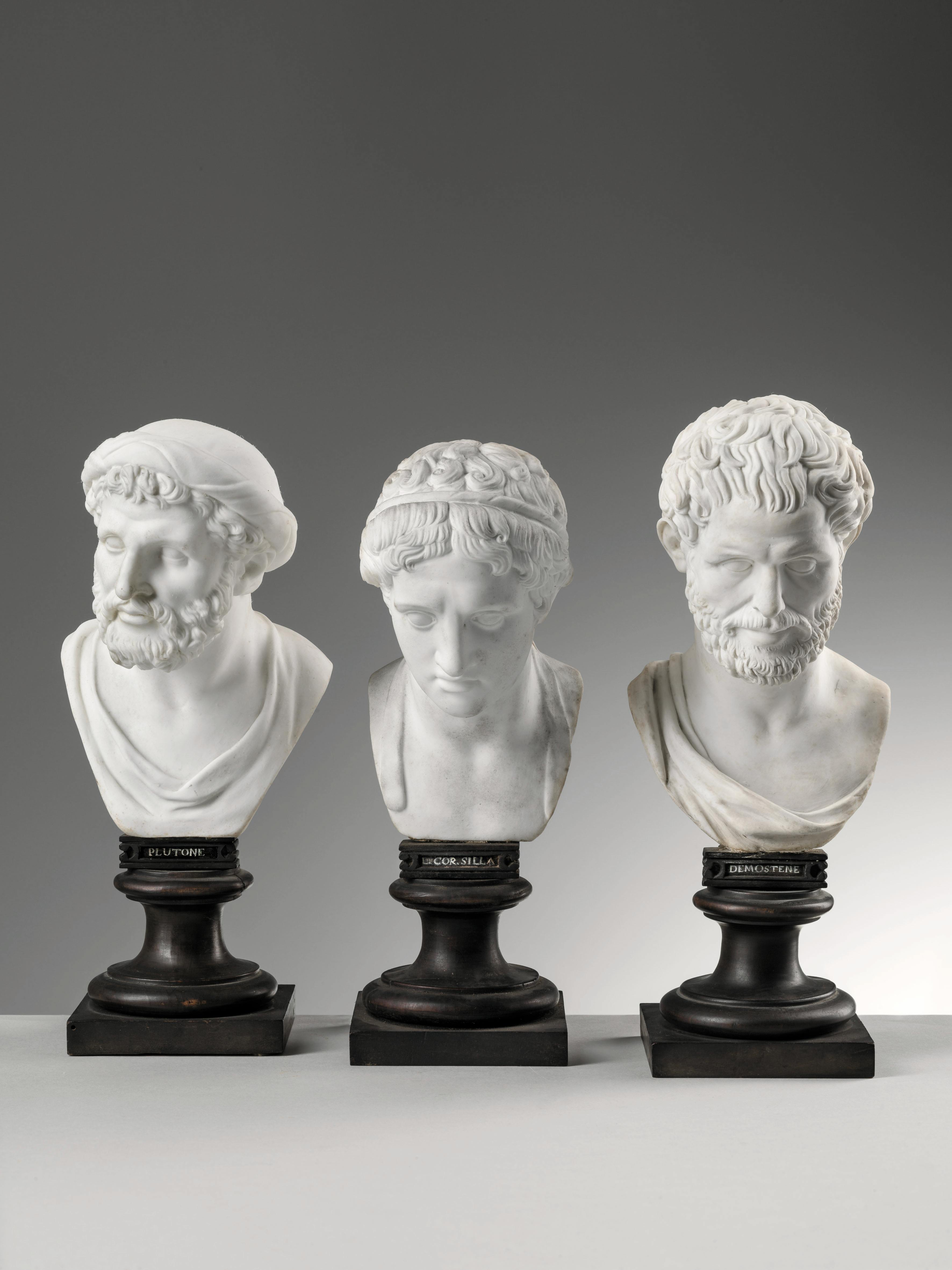Pythagoras; Heracles; Aristotle
Filippo Tagliolini and Real Fabbrica Ferdinandea
These small busts belong to a series consisting of thirty-two pieces depicting, in miniature, the bronzes found in 1753 at Herculaneum inside the Villa dei Papiri, currently on display at the National Archaeological Museum in Naples. The uncertainty about the identification of the portrayed persons is mainly due to the information coming from that period, which was mostly made known through engravings in the printed repertory Antiquities of Herculaneum Exposed (1757-1792), where, for example, Pythagoras and Artistotle, but not Heracles, are reproduced among the pieces presented here.
The decision to create this series is in line with the antiquarian interest strongly influenced by the travellers of the Grand Tour, while the choice to work the porcelain in biscuit style interprets the neoclassical taste for its attempt to imitate the whiteness of marble. This series was coupled with the so-called Servizio Ercolanese, as indicated in 1782 by Ferdinand IV of Bourbon, sovereign of the Kingdom of Naples, in a letter sent to his father Don Carlos, where in describing the sculptural parts by which it was composed, he specified: “a collection of half-busts, of those very well known to Your Majesty.” Another majestic and monumental dessert set, destined for the court of Ferdinand IV, was created between 1785 and 1787 at the Real Fabbrica Ferdinandea, based on an invention by sculptor Filippo Tagliolini, under the direction of Domenico Venuti, who was also appointed as General Director of the Kingdom's excavations. The table setting proposed a service named Dessert per 60 coperti (Dessert for 60 guests), where the pieces of the Pitti Palace appeared with the addition of the busts of emperors Tiberius and Augustus, as well as those of Vesta and probably of Sappho.
There is no information regarding the arrival at Pitti Palace of the series to which these busts belong. It has been speculated that they came as a gift from the King of Naples to his daughter Luisa Amalia on the occasion of her marriage with Ferdinand III of Habsburg-Lorraine, or for her investiture as Grand Duchess of Tuscany in 1791. However, they should be identified among the “Groups, Figures and Busts in Biscuit, at France disposal” mentioned in the letter sent in 1785 by Giuseppe Bruschi, who at the time was working for the Real Fabbrica Ferdinandea, to Lorenzo Ginori, director of the Doccia Manufactory. As a matter of fact, in 1785, Ferdinand IV of Bourbon and his consort, Maria Carolina of Habsburg-Lorraine, brought some porcelain made in the Neapolitan factory as a gift to the Grand Dukes of Tuscany on occasion of their visit to Florence, including the Solitaire with views of the Kingdom of the Two Sicilies and probably the series representing the Clothes of the Kingdom, both of them preserved in the Porcelain Museum of the Pitti Palace (inv. A.c.e. 1911 no. 1015, 1019, 662, 679).
